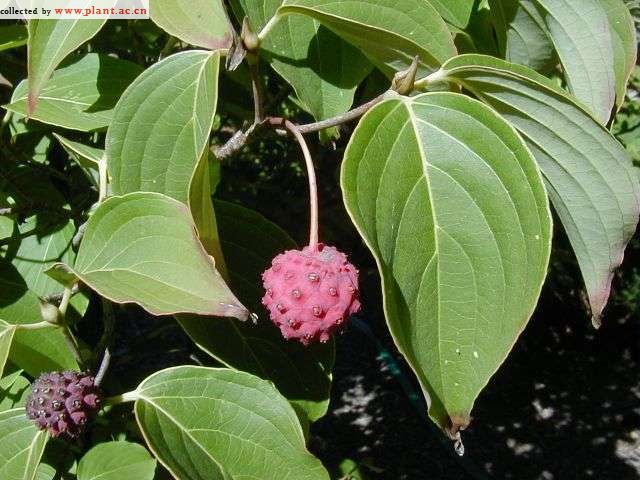Cornus kousaKousa dogwood
科:山茱萸科
Family:Cornaceae
属:山茱萸属
common name:Kousa dogwood
introduce:Plant Type: Tree
Family: Cornaceae
Missouri Native: No
Native Range: Japan, Korea, China
Height: 15 to 30 feet
Spread: 15 to 30 feet
Bloom Time: May - June
Bloom Color: White to pinkish (bracts)
Sun: Full sun to part shade
Water: Medium moisture
Maintenance: Low
General Culture:
Best grown in organically rich, medium wet, well-drained, sandy soils in full sun to part shade.
Noteworthy Characteristics:
Kousa dogwood (also sometimes commonly called Japanese dogwood) is a small, deciduous flowering tree or large multi-stemmed shrub which typically grows 15-30?tall with a vase-shaped habit in the early years, eventually maturing to a more rounded habit. As in the case of flowering dogwood (see Cornus florida ?C280), the showy parts of the Kousa dogwood 揻lower?(3-5?across) are the four white petal-like bracts which surround the center cluster of insignificant, yellowish-green, true flowers. However, the showy bracts of Kousa are narrowly pointed whereas the bracts of flowering dogwood are rounded. Bloom occurs in late spring (several weeks after flowering dogwood). Flowers are followed by berry-like fruits (to 1?diameter) which mature to a pinkish red in summer and persist into fall. Fruits are edible, but are usually left for the birds. Dark green foliage turns reddish purple to scarlet in autumn. Cornus kousa var. chinensis (Chinese dogwood ?H640) is very similar to the species, except it is slightly more floriferous and its showy flower bracts are slightly larger.
Problems:
No serious insect or disease problems. This plant has better disease resistance and better cold hardiness than flowering dogwood, and is an excellent alternative to flowering dogwood in areas where dogwood anthracnose is a problem.
Uses:
A stunning flowering tree or large shrub with good fall color. Plant as a specimen or in small groupings on residential property around homes, near patios or in lawns. Also effective in shrub borders, woodland gardens, bird gardens or naturalized areas.
